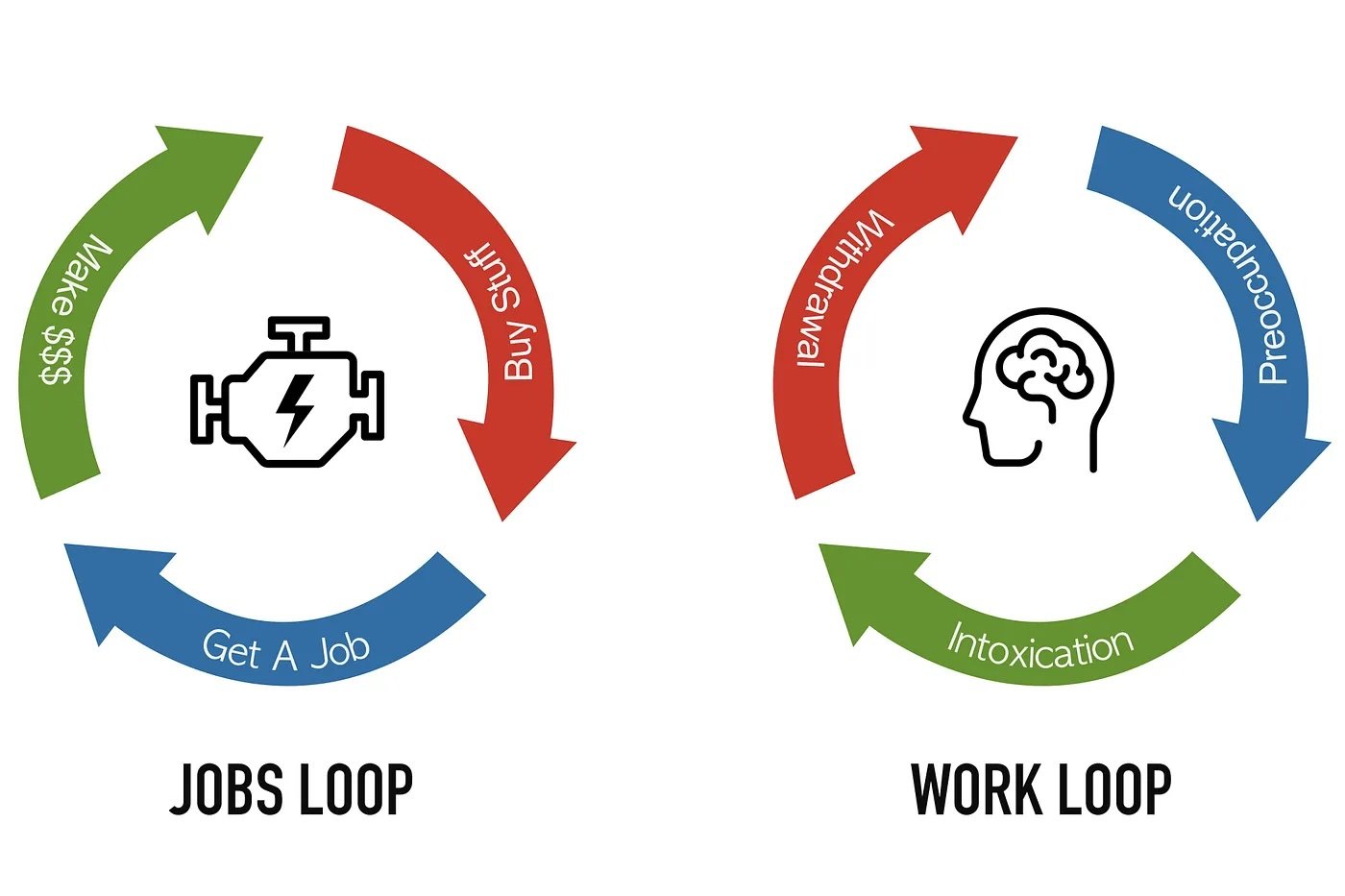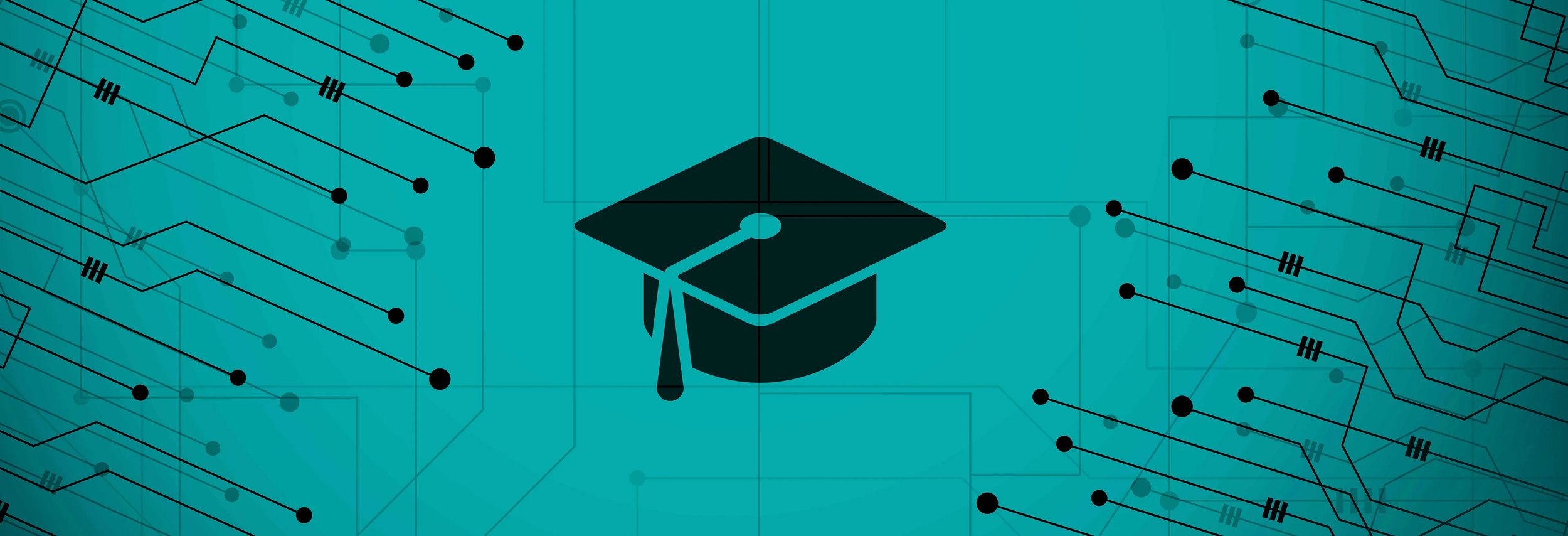Welcome to the hs.credit Blog
Explore the intersection of learning and technology. Discover new ways to empower students. Harness the potential of AI. Prepare for the first period of rapid edu evolution in 150 years.
Let's shape the future together.
Featured Posts
by date of
publication

AI and The Art of Education
Education, art, and social justice intersect in navigating societal change. Familiarity with this experience is key to success.

hs.credit: We “Arm the Rebellion” Against Standardized Testing
HS.CREDIT is a new platform that replaces standardized testing with student-created media projects, empowering students to engage in authentic learning and showcase their skills through monthly uploads. This initiative aims to shift education away from compliance-based learning towards student-centered, project-based learning that prepares students for the digital age.
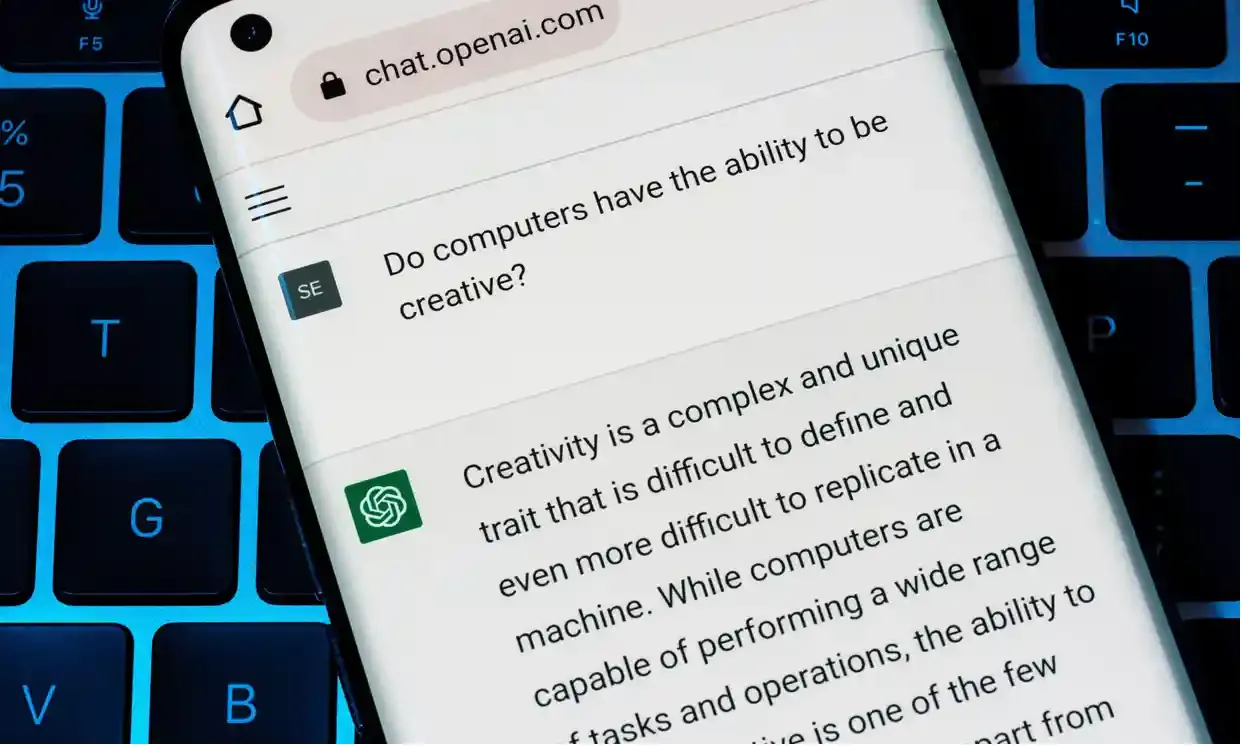
ChatGPT Banned in NYC Schools
NYC schools ban ChatGPT, a tool that can help students produce media and educators assess student work. This highlights the limitations of a command-and-control education system, where banning technology is the only response to new challenges. Embracing tools like ChatGPT could empower students and teachers, fostering academic voice and reducing teacher workload.

#PassionForLearning
hs.credit aims to revolutionize high school education by replacing standardized tests with student-created media projects. It encourages a passion for learning by allowing students to showcase their academic thinking through podcasts or videos and rewarding them with cryptocurrency for fostering diversity and inclusion. The platform is still in stealth mode but is looking to build a community of Champions to support its growth and mission.
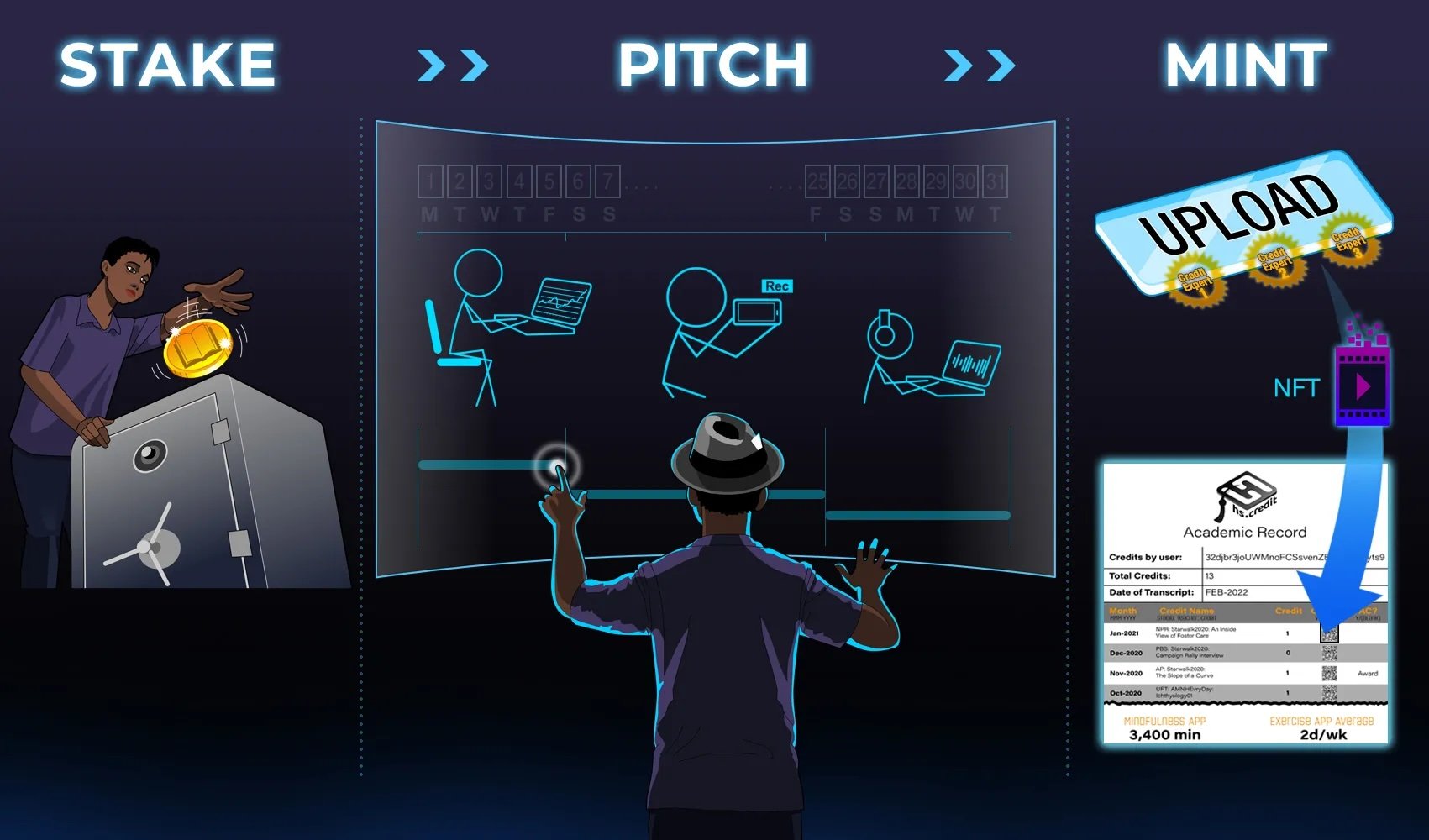
Staking, Pitching, Minting
Web1 brought us digital content publishing with websites and hyperlinks (download). Web2 brought us digital content sharing with social media (download+upload). Web3 brings us digital content ownership with blockchain (download+upload+property). HS.CREDIT, a Web3 app, brings us student ownership of learning in a three step process: STAKE, PITCH, MINT.

The Death of Standardized Testing
hs.credit is a decentralized app that replaces standardized tests with student-created media projects, utilizing ntNFTs as proof of academic achievement. This fosters project-based learning, addresses educational inequality, and rewards students who promote equity. The platform operates on a decentralized model, with contributors earning future royalties. By focusing on student-driven projects and diversity, hs.credit aims to revolutionize education for the digital age.
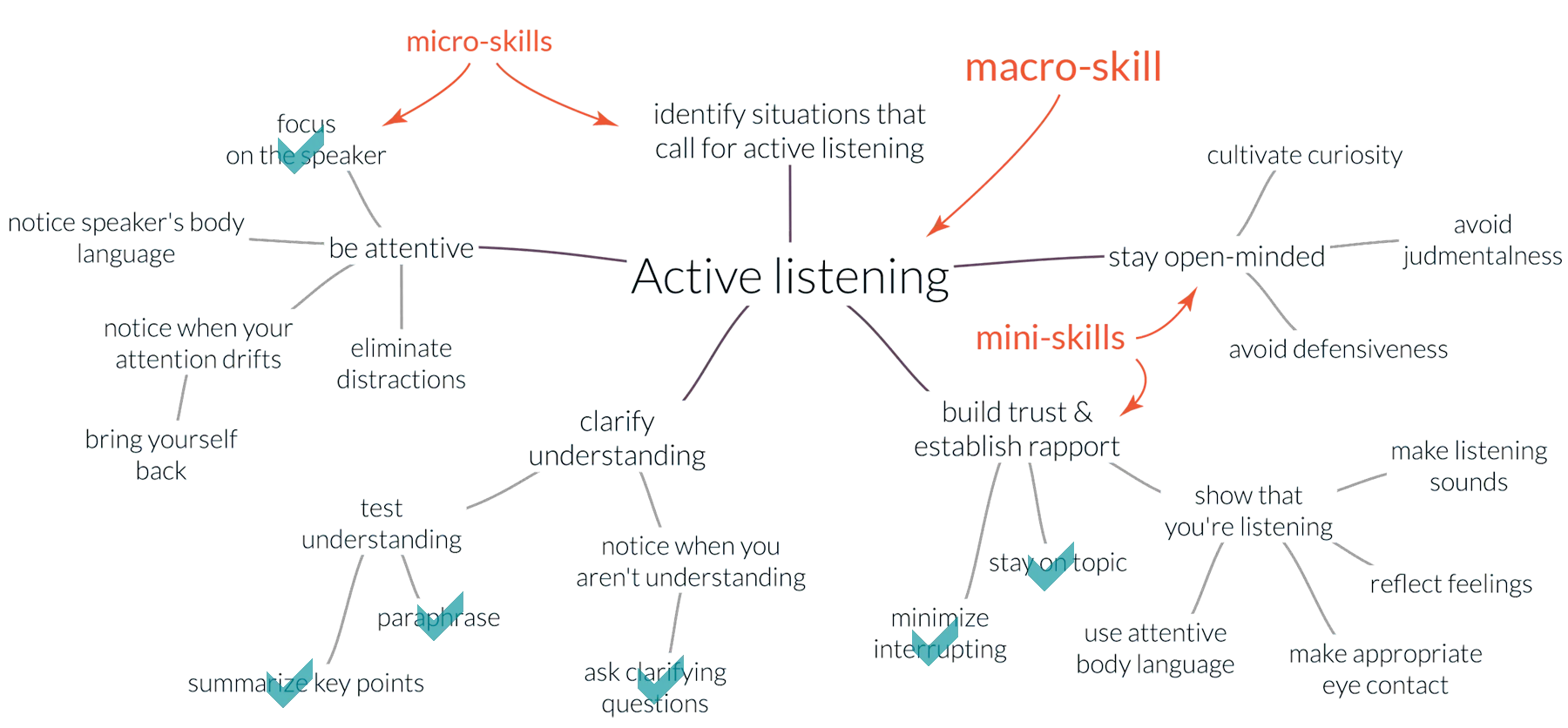
Gold Standard Credits: A New Model for Student Achievement
This is an article about using skill maps to improve decision-making. It discusses how to identify macro and micro-skills from skill assessments. You can then use this information to create a plan to practice specific skills. By focusing on micro-skills and practicing them in context, you can gradually improve your overall skillset.

Bitcoin: America's Declaration of Financial Independence
Bitcoin, a decentralized digital currency, offers financial freedom and security by allowing individuals to control their savings without government or corporate interference. Unlike inflationary fiat currencies, Bitcoin is deflationary and designed to increase in value over time. It is more secure than traditional financial systems and uses less energy than maintaining fiat currencies. While Bitcoin's price is volatile in the short term, it has consistently outperformed other assets over the long term. As a new kind of money designed for individual wealth storage, Bitcoin represents a significant step towards financial independence for individuals and a potential boost for the US economy.

The Problem hs.credit Was Designed to Solve
hs.credit solves the low-quality data problem in education by replacing standardized tests with project-based media creation. This decentralized transcript app uses ntNFTs to cryptographically verify student work, making it harder to cheat and impossible to manipulate data. It incentivizes students to address inequality and rewards them with basic income, creating a gold standard for educational data.
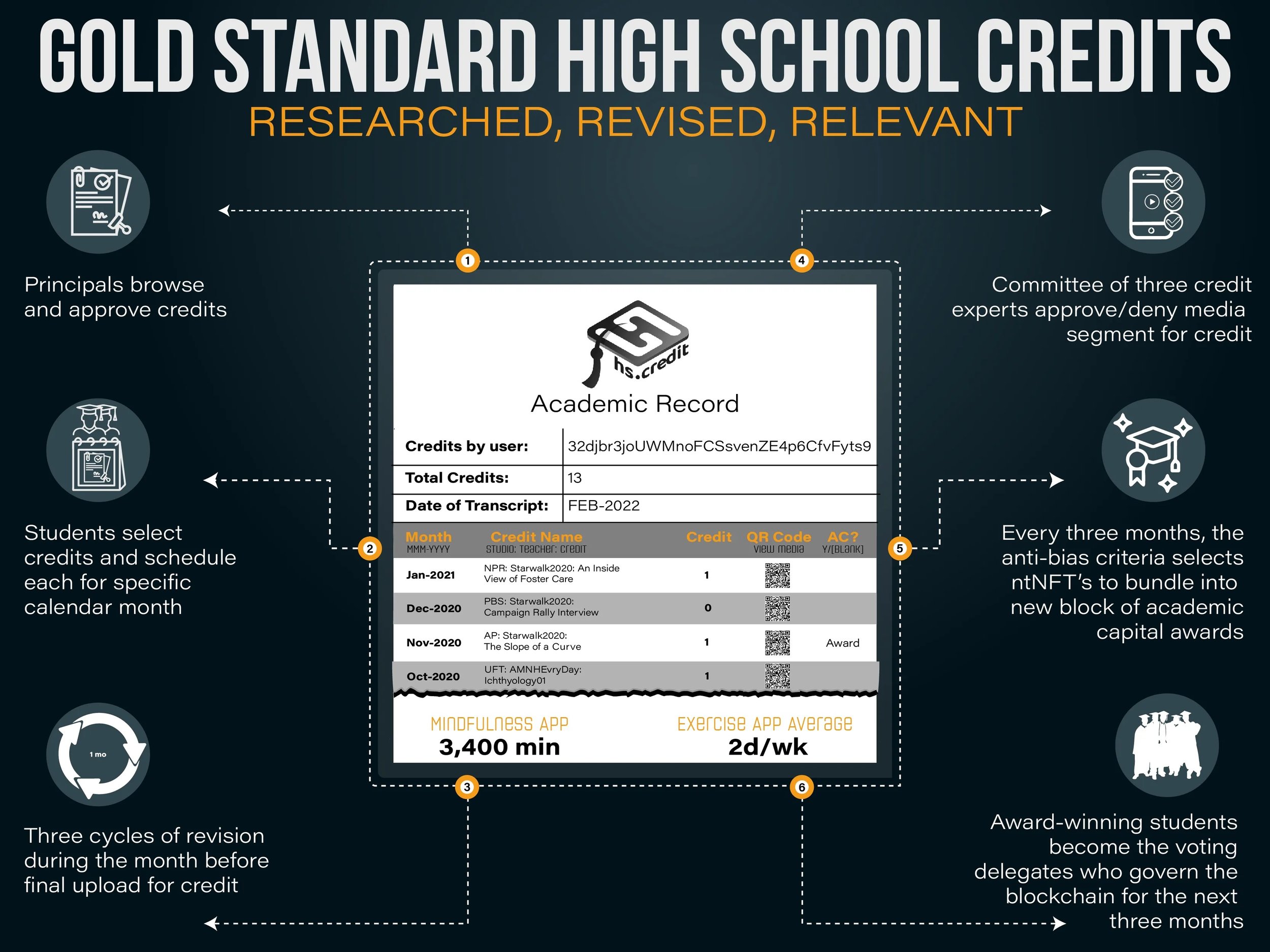
The Digital Age Demands a New Transcript
hs.credit revolutionizes high school transcripts by replacing standardized tests with project-based learning. Students earn credits by uploading monthly video/podcasts, assessed by educators. This approach empowers students, gives educators control over accountability data, and aligns education with the digital economy.

ntNFTs: A Revolutionary Leap for High School Education
ntNFTs are unique digital tokens used for transcripts, replacing standardized tests with project-based learning. This revolutionary system puts educators in control of educational data and incentivizes innovative teaching methods.

Bill Gates, the Super Boomer
Bill Gates' proposed solutions for global warming, as outlined in his new book and a 60 Minutes interview, rely on industrial-scale interventions that fail to address the root cause of the problem: human consumption. Instead of promoting sustainable lifestyle changes, Gates offers a false sense of security, suggesting that technological fixes can compensate for our destructive habits. This approach not only ignores the need for a paradigm shift towards a less wasteful society but also risks delaying meaningful action.

Hyper-Local Journalism and the Future of High School
The article proposes a radical shift in high school education, advocating for the replacement of standardized tests with project-based learning focused on creating podcasts and videos. This approach aims to foster critical thinking, community engagement, and real-world skills. By leveraging technology and incentivizing quality content creation, the author envisions a decentralized system where students earn credits through verified work products, empowering them and redefining academic achievement. The article highlights the potential for this model to revitalize education, fill gaps in local journalism, and create a more equitable and engaging learning environment for all students.

Beyond the High School Diploma
TL:DR: Credits remain meaningful at individual high schools with strong reputations. Many high schools do an excellent job of ensuring value in their credit awards. It follows that academic reputation is a key derivative market of academic capital, measured in endorsements from top universities and trusted third parties such as The College Board or Harvard University.

From Standardized Tests to Student-Created Media
If we distinguish the regime of standardization from the practice of normalization, light is shed on quality educational data. This distinction can at first feel cloudy to educators since in a teacher’s daily practice, these ideals are not neatly differentiated. For example, in order for teachers to grade standardized tests, they must learn to normalize grading practice. Below I offer specific implementation details for systems driven by normalization at the school district, individual school, and even at the level of student-to-student incentives toward greater critical thinking.
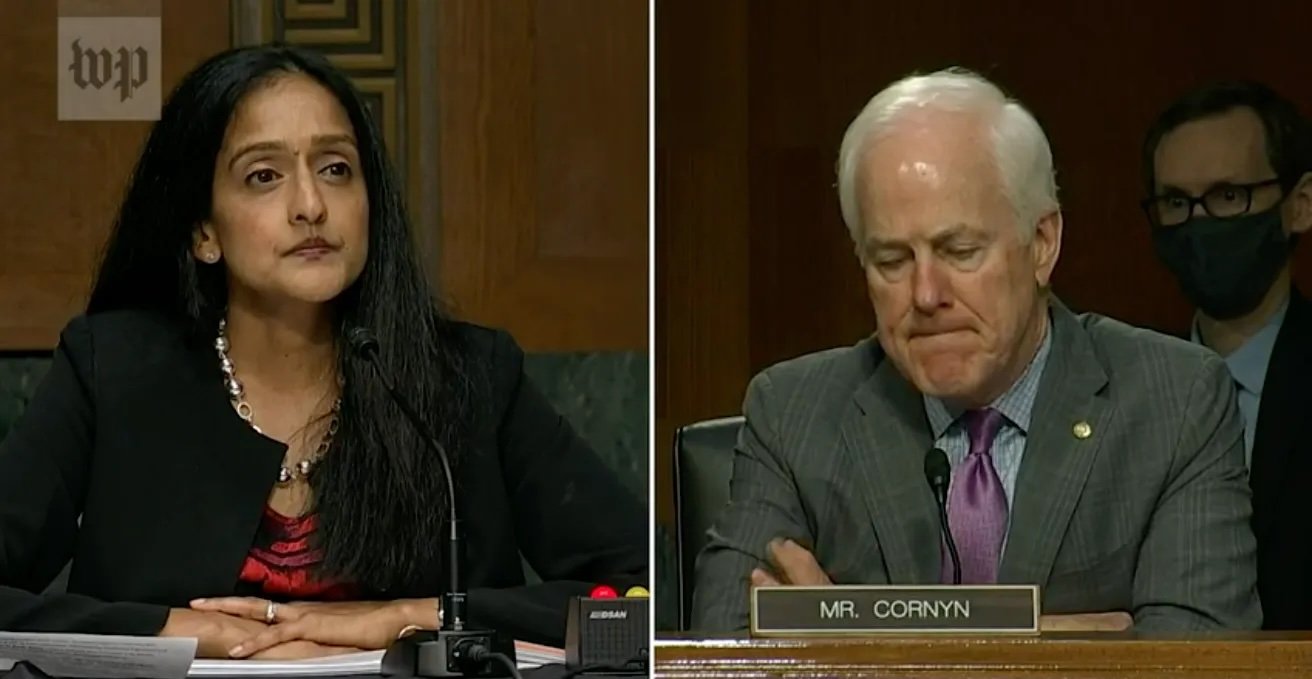
The Profit in Bias
The Digital Age is creating an unprecedented opportunity for diversity to drive prosperity. And America clearly may have a head start. Industrial dynamics of ownership and coercion are increasingly outperformed with decentralized digital models based on sharing. This “inversion” as it is called, changes inter-group dynamics because we only benefit from having an enemy to hate when we are in competition over finite resources.
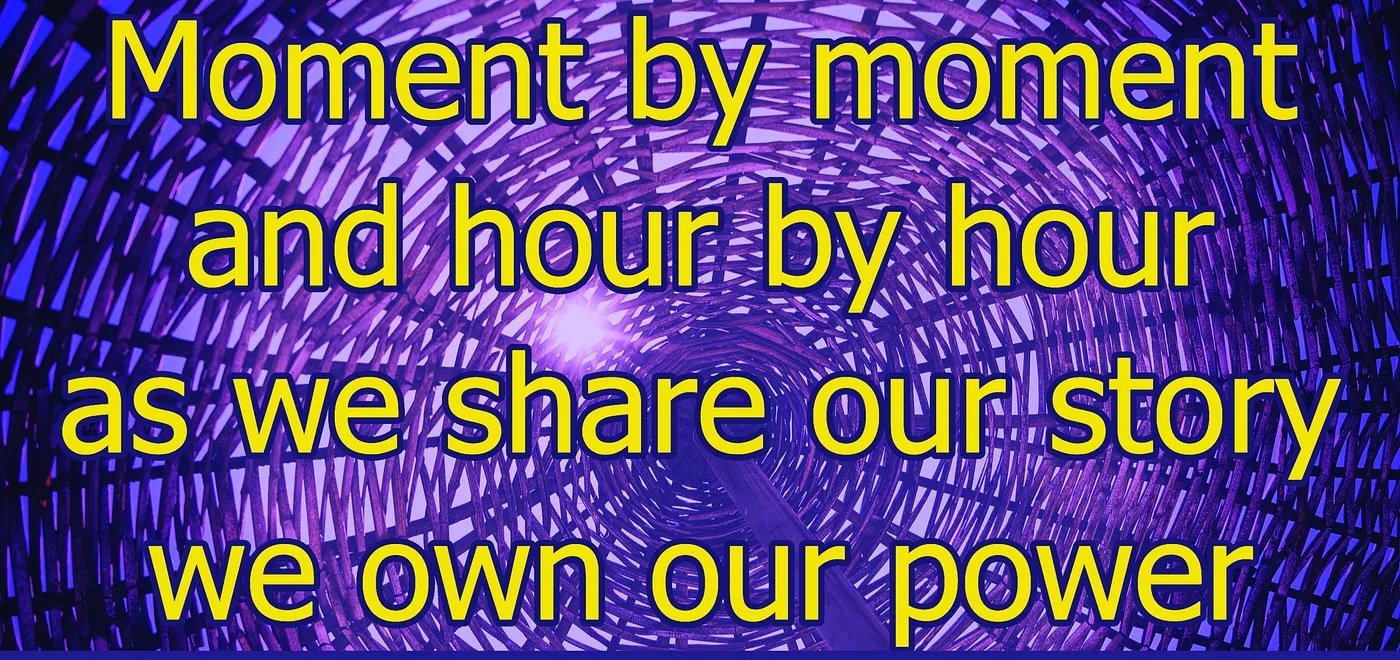
Academic Credits as Digital Gates
In digital native academic settings students will interact with the world around them, using their smartphones to record primary sources rather than consuming academic content controlled by the major publishers and testing conglomerates. Students learn to invest their attention with intention, building work ethic, frustration tolerance, and maker skills, not to mention gaining an experience of how digital economics allow us to convert sweat equity (focused attention) into an investment in new forms of capital.

Cuomo’s ‘Reimagine Education’ Technology Plan Is Doomed to Fail
TLDR: Cuomo will never implement relevant technology because it would mean he loses control. Education reform cannot come from politicians, it must come from parents, the best teachers, and the open source software movement.

A Response to Current Trends in the Human-Digital Interface
When you have spent time thinking as a “system thinker,” you have certainly concluded that education is a high leverage tool for social impact. I grew up in Chicago where it was rumored that the downtown “Loop” was originally designed with all the corporate rents in the skyscrapers paid to the department of education. This is a similar proposal: fund a basic income for top high school graduates with new cash coming into circulation appearing in their digital wallets monthly.

An Unusual Book Review
TL;DR: This book articulates how corporate-mindedness has rotted out collectivist institutions, like my own union, ignoring that the students in poverty are the ones who always end up losing while adults negotiate their win-win agreements.


